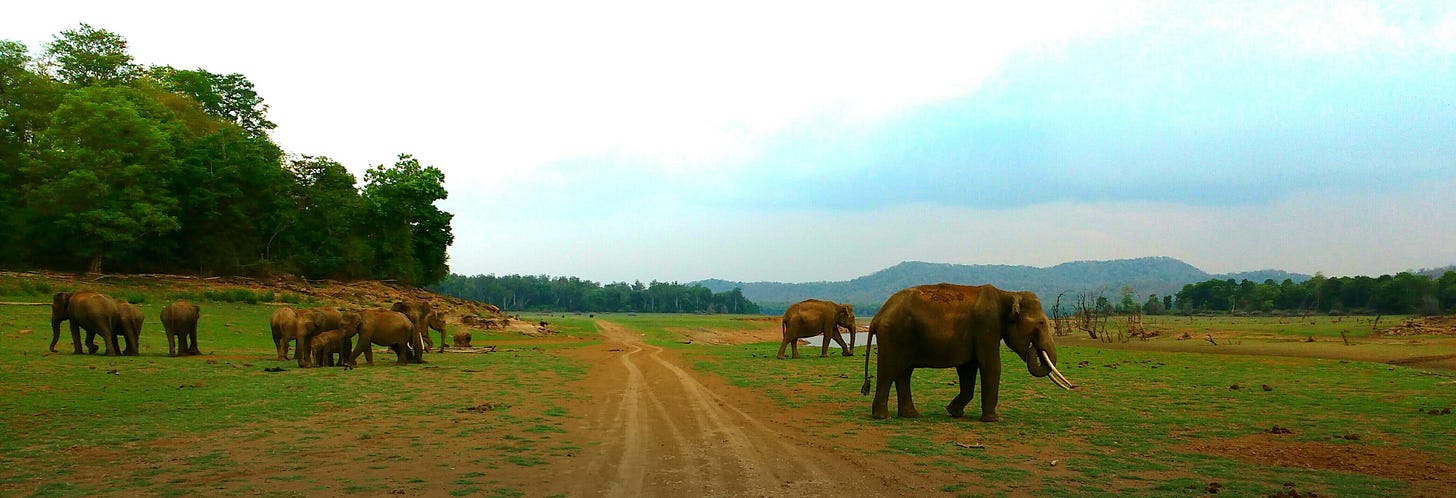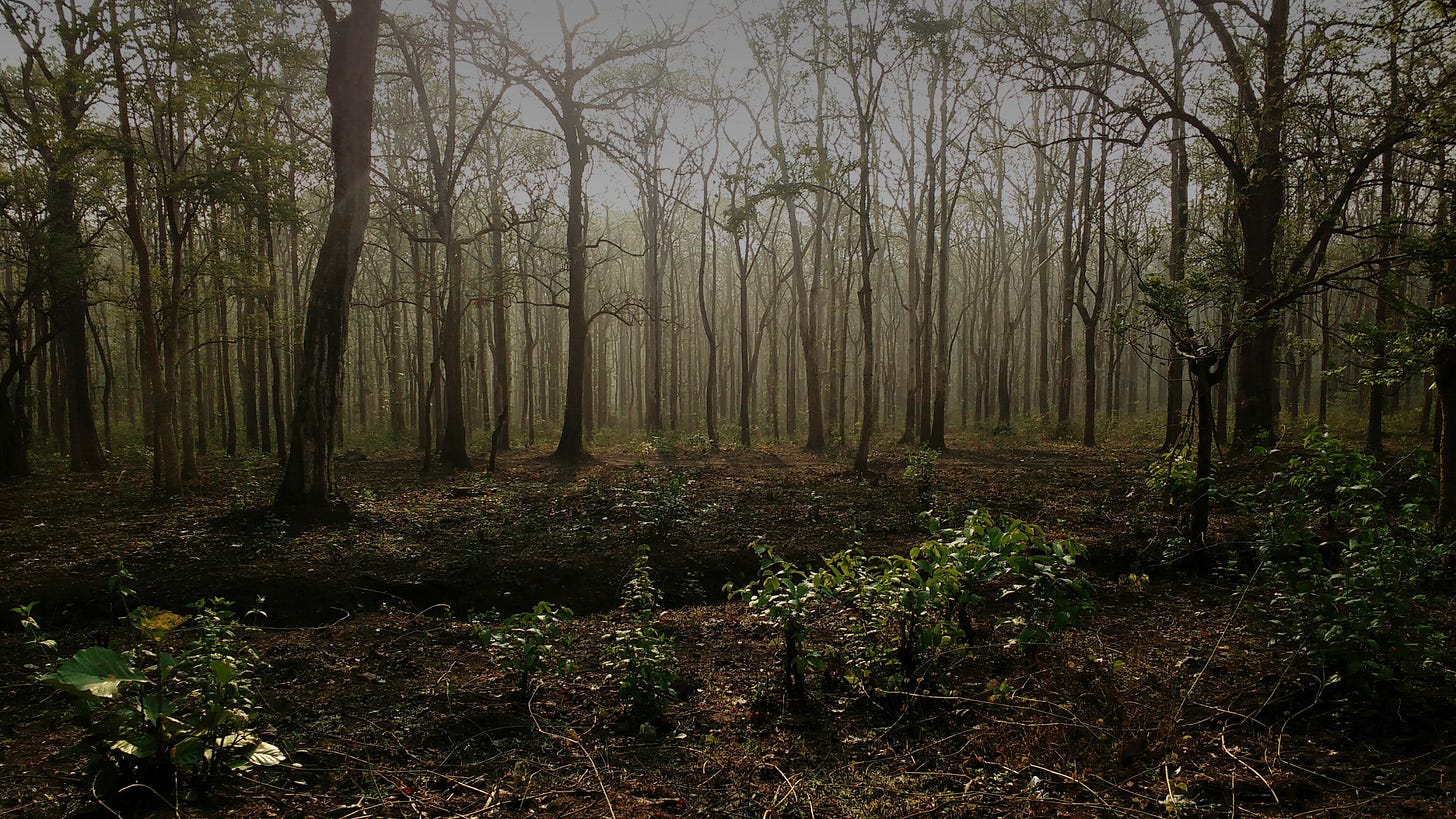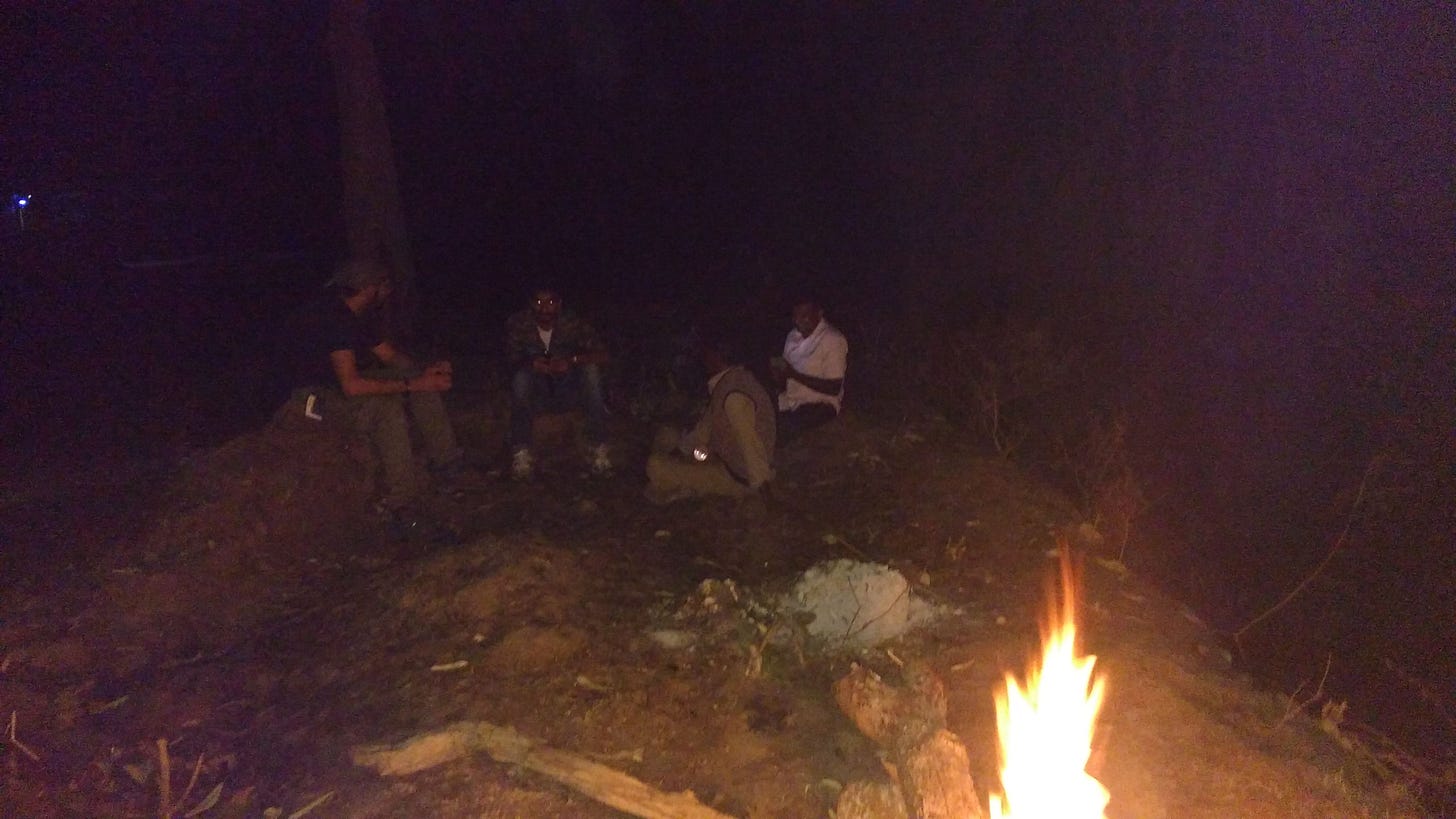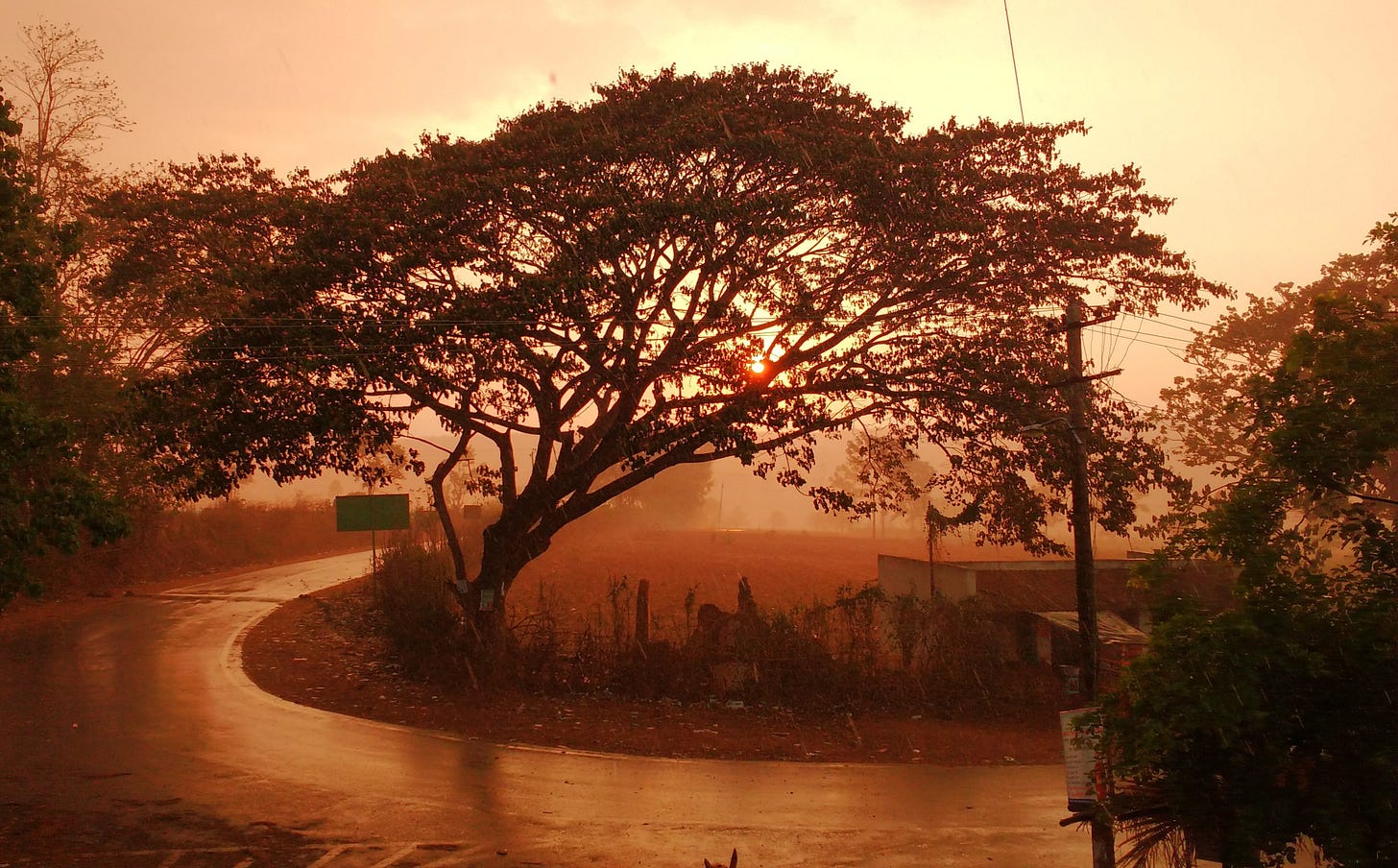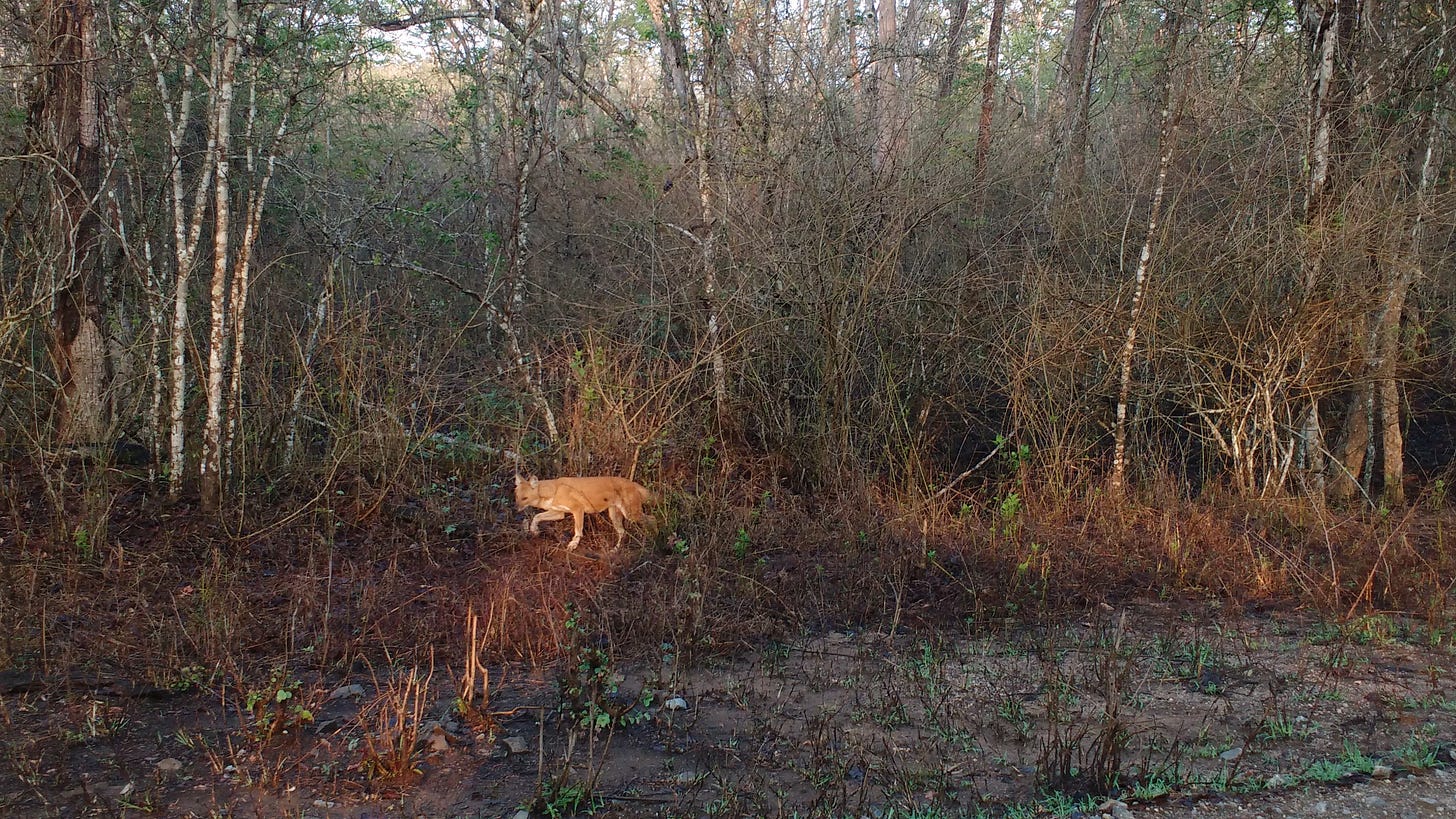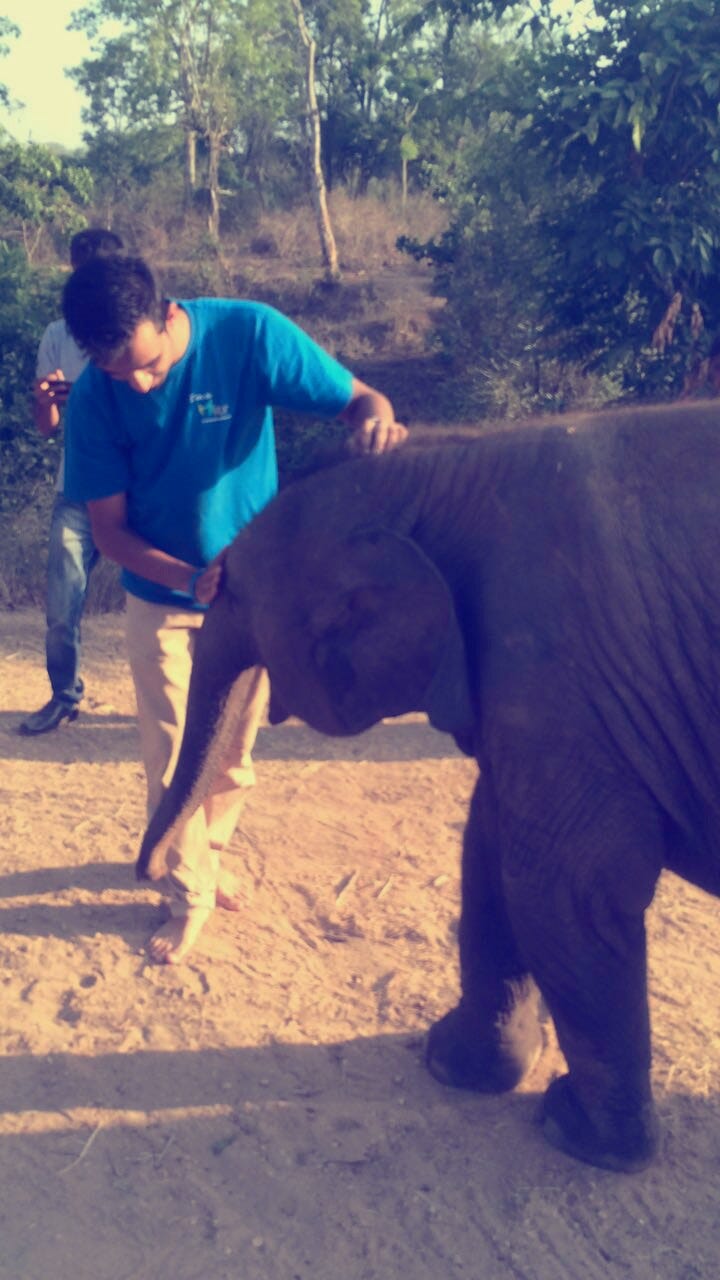Rooted (2/2)
My memoir of experiences that altered the fabric of my being. These are some of my bitter-sweet tales while working with Wildlife Conservation Foundation (WCF) in Nagarhole Tiger Reserve.
Nagarhole Tiger Reserve, often whispered synonymously with the name Kabini, after the river that cradles it, shines like a verdant emerald in Southern India. This treasure trove of a forest weaves together the fabric of natural and cultural realms.
This evergreen sanctuary harbors the wisdom and traditions of ancient Dravidian tribes. These tribal communities, frozen in time, continue to subsist in their rustic abodes - thatched huts standing tall against the passage of time. Their devout footsteps lead them to sacred temples, their stones weathered and steeped in centuries of history and worship. These forested expanses were the hunting grounds for the celebrated Wodeyar Dynasty of Mysore, their footsteps resonating in the silent forest floors.
I had extensively traveled across several forested regions of India in the past, each leaving me with a wealth of unique memories. Yet, Nagarhole, tenderly nestled within the bosom of the Nilgiri Biosphere, stands unrivaled in its grandeur. It is the regal court of the Royal Bengal Tiger, the home of the majestic Asiatic Elephant, and the playground of the elusive Indian Leopard. The inhabitants of this Eden contribute to a rich tapestry of flora and fauna, the depth and diversity of which is a sight to behold.
Sounds dreamy? It certainly does, but my stint there was anything but comfortable. In my limited years of existence, these were perhaps the most challenging six weeks of my life. They tested the limits of physical and mental endurance, teaching me to adjust and embrace adversity with my chin up.
My first posting was at the Veeranahosalli check post, primarily for patrolling the northern regions of the national park and mostly devoid of mainstream tourism. About 200 meters from the forest gate was a tiny lodge, the only accommodation option in the area, where we’d spend our first month. The front metal gate of the lodge had been razed to the ground by a bull elephant in 'musth' just a few weeks prior. Sights like these are commonplace in the forests of Southern India due to the high density of elephants, so Inderjeet and I were not surprised. However, the poor quality of the room we had to live in did unsettle our privileged souls. Flaky walls, damp air, a leaky roof—we remained determined and headstrong, until a sound woke us up on our very first night. It wasn't the sound of the forest. It was the cacophony of bodies colliding in the dead of the night. The lodge was a local brothel, and we were its residents.
After a scandalous month in Veeranahosalli, we moved to Karapura. This is one of the most well known regions of the park. It's where the luxury hotels are located and where local markets bustle with tourists and safari vehicles. In contrast to our last spot, this area was a significant upgrade. Even our accommodation was reasonably tidy despite its modest size.
My Garmin GPS device showed that we had already covered about 1100 kms on the road, with the majority of the distance being remote forest roads. By now, through our fieldwork, we had experienced some extraordinary moments in the wild—from witnessing various tiger specimens (I have a soft spot for the Backwater Female), to having a near-death encounter with a herd of elephants, to being surrounded by a cute pack of wild dogs basking in the morning sun. Although we were on the last leg of our fieldwork, our adventure was far from over.
The event that transpired during my first week in Karapura would forever remain etched as one of the most nerve-wracking and traumatic moments of my life.
Trigger warning: death/suicide.
One night at 2:00 AM, I received a frantic call from my supervisor. He informed me that he'd be picking me up shortly for an urgent trip to Mettikuppe, a neighboring village. During our drive, he explained that he had received a distress call about a herd of approximately 30 elephants raiding a banana plantation.
Upon arrival, we found ourselves amidst a large gathering of locals. They surrounded a woman who was desperately clutching her husband's lifeless body, crying out in agony. The sight was both horrifying and heartbreaking.
After inquiring among the villagers, we learned that the deceased man had woken up to use the restroom a few hours earlier. As he stepped out, he was met with the shocking sight of elephants trampling over and consuming his crops. Overwhelmed by the devastation, and already burdened by a loan of Rs. 2 lakhs that he had drawn for the crop, the man sadly chose to end his own life, fearing a lifetime of crippling debt.
Conclusion
The inevitability of agricultural lands on the exteriors of a forest puts humans and their homes in very close proximity to wildlife. This dangerous phenomenon has significant socio-economic impacts that need constant hands-on monitoring. The documentation of such events often goes unrecorded and doesn’t effectively reflect in government policy, as it rightfully should. To emphasize this point, I’d highly recommend wildlife veteran and conservation biologist Raghu Chundawat’s book, 'The Rise And Fall Of The Emerald Tigers: Ten Years Of Research In Panna National Park,' which discusses these topics at length. Our jobs as interns were to collate such stories, document them into numbers, and form a narrative around them. The research report that we submitted to the forest department was fully classified, but these anecdotes from my days of work at WCF have impacted me the most.
After experiencing the vast, varied landscapes of Nagarhole, it became clear that it's not just about the wildlife that inhabits it, but also about the people whose lives are intertwined with these majestic creatures and the landscapes they call home. The paradox of beauty and hardship, joy and pain, tranquility and chaos, all housed within this rich ecosystem, was a testament to the complex relationship between humans and wildlife.
The harsh reality of man-animal conflict, often overlooked in the romanticization of wildlife conservation, was a lesson Inderjeet and I could never learn in a classroom. These stories of human struggle and endurance in the face of nature's might were a profound reminder that conservation is not just about protecting wildlife but also about securing the lives and livelihoods of the people who live alongside these magnificent creatures.
As we sat on the jute bench of the D.B. Kuppe Guest House, a mix of emotions washed over us. We reflected on the privilege and responsibility of witnessing these intricate narratives of life and death, survival and sacrifice, conservation and conflict. These experiences, both heartwarming and heartbreaking, have imprinted themselves in our hearts, driving our determination to make a difference.
So, what can you, as a reader, do? Understand and empathize with the real-life challenges in wildlife conservation. Support initiatives that aim to balance the needs of wildlife and the communities living in close proximity. Advocate for policies that consider the socioeconomic realities of these people and reflect them accurately. Remember, in the grand tapestry of conservation, every thread, every story, and every voice matters - including yours.
As I continue on this path, I carry these stories with me, a stark reminder of the transformative power of a childhood journey, a reminder that the ultimate mission is not just about conservation, but also about the people whose lives are intertwined with the wildlife they live alongside. It's about sustaining the harmony between them, and that’s the mission I continue to strive for.



